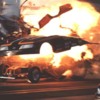I have a .030 overbored standard stroke short block that's in great shape. I'd like to put a stroker kit in it. What's the largest easily obtainable engine size that I can get from this bore size? I'd like to avoid the whole machine shop ordeal if I can. The bores are in excellent shape, the hash marks are still crisp and visible in the bores. The engine only has about 2000 miles on it since the last total rebuild. I was thinking about disassembling the short block, run a hand held cylinder hone through the bores just to clean them up, and toss a stroker kit in it. I don't mind some minor clearancing that I can easily do at home with a hand held die grinder, but I don't want to start with a machine shop. That snowballs into a whole big ordeal that I don't want to get involved in. Who's stroker kit should I use, and how large an engine can I easily obtain given the limitation of the .030 over bore?
Original Post


